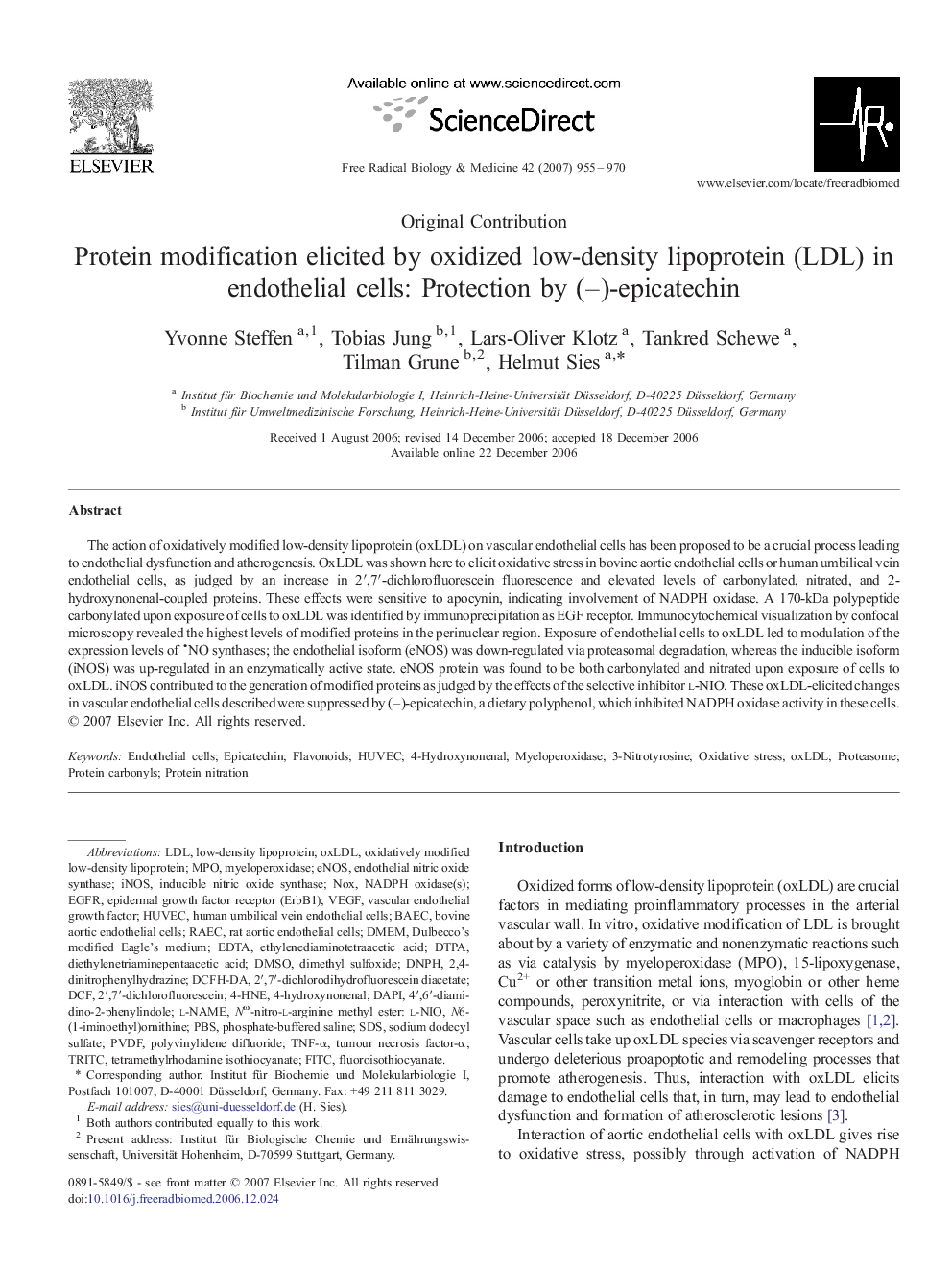| Article ID | Journal | Published Year | Pages | File Type |
|---|---|---|---|---|
| 1911699 | Free Radical Biology and Medicine | 2007 | 16 Pages |
The action of oxidatively modified low-density lipoprotein (oxLDL) on vascular endothelial cells has been proposed to be a crucial process leading to endothelial dysfunction and atherogenesis. OxLDL was shown here to elicit oxidative stress in bovine aortic endothelial cells or human umbilical vein endothelial cells, as judged by an increase in 2′,7′-dichlorofluorescein fluorescence and elevated levels of carbonylated, nitrated, and 2-hydroxynonenal-coupled proteins. These effects were sensitive to apocynin, indicating involvement of NADPH oxidase. A 170-kDa polypeptide carbonylated upon exposure of cells to oxLDL was identified by immunoprecipitation as EGF receptor. Immunocytochemical visualization by confocal microscopy revealed the highest levels of modified proteins in the perinuclear region. Exposure of endothelial cells to oxLDL led to modulation of the expression levels of NO synthases; the endothelial isoform (eNOS) was down-regulated via proteasomal degradation, whereas the inducible isoform (iNOS) was up-regulated in an enzymatically active state. eNOS protein was found to be both carbonylated and nitrated upon exposure of cells to oxLDL. iNOS contributed to the generation of modified proteins as judged by the effects of the selective inhibitor l-NIO. These oxLDL-elicited changes in vascular endothelial cells described were suppressed by (–)-epicatechin, a dietary polyphenol, which inhibited NADPH oxidase activity in these cells.
